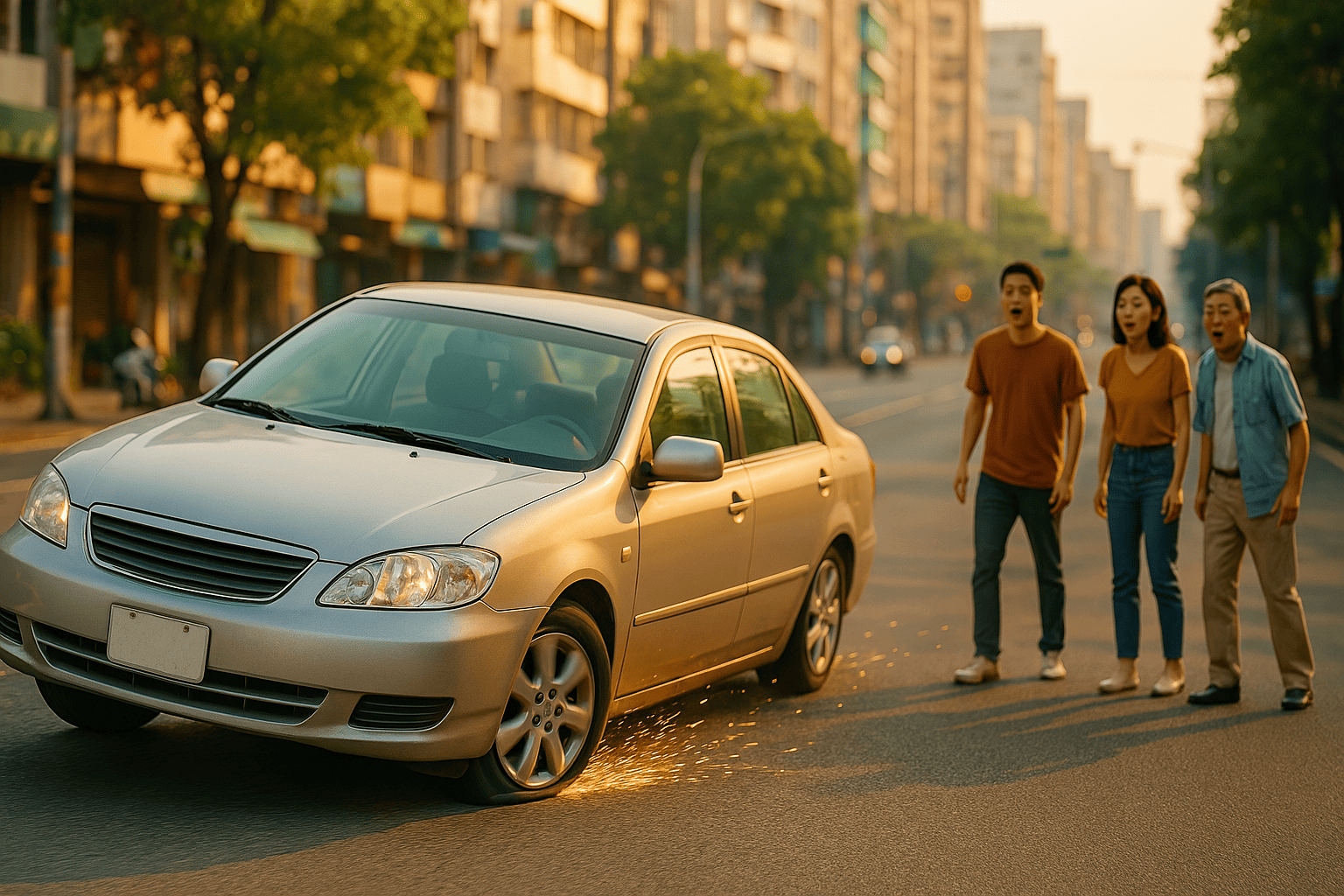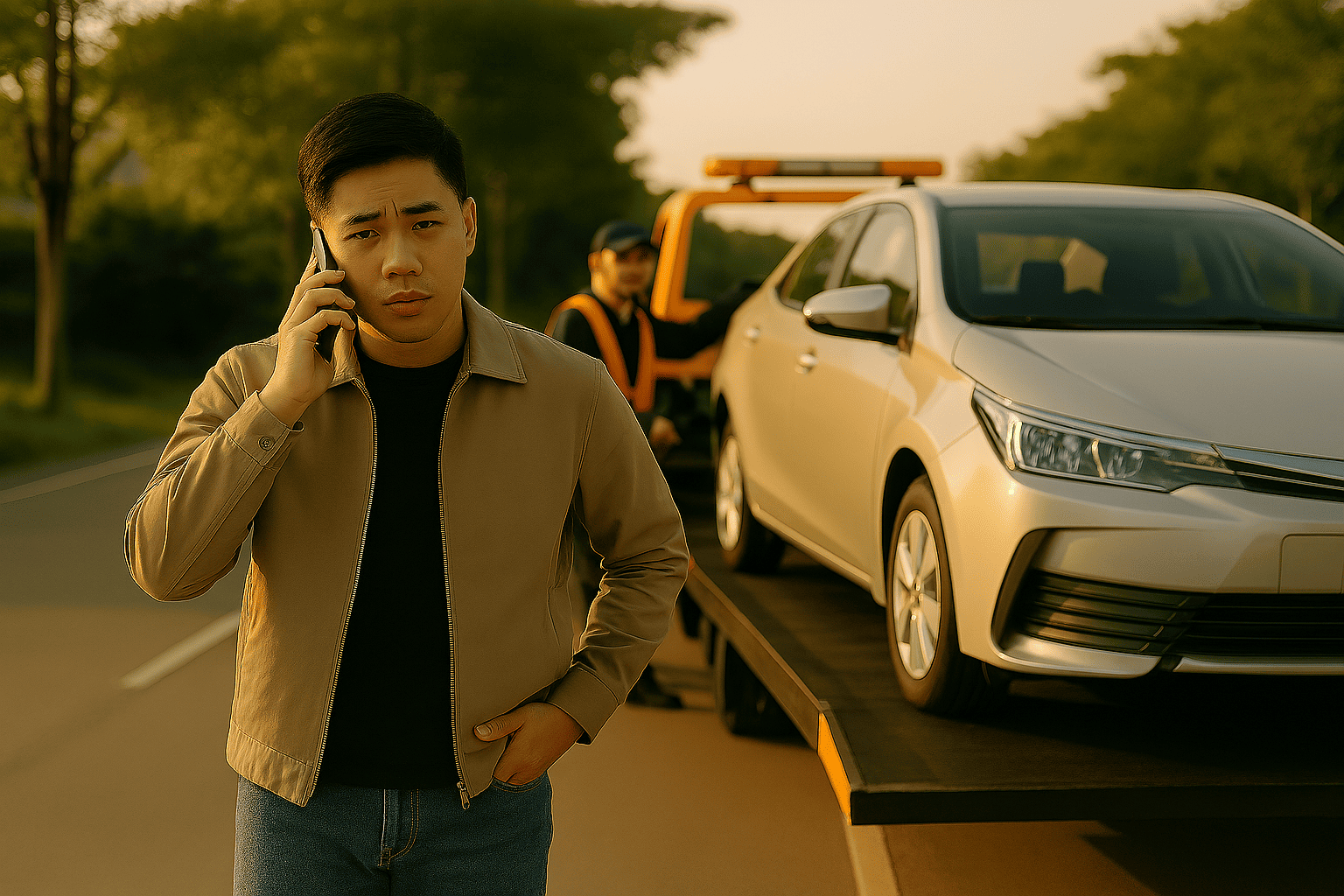Got a Flat Tire? Don't Drive on It! The 3 Fatal Risks and Correct SOP

You're on the highway or a remote road, and suddenly you hear a loud "bang!" followed by the car shaking violently and the steering wheel becoming hard to control—this is every driver's worst nightmare: a tire blowout.
At that moment, what's your first thought? "Just drive slowly to the next rest stop"? Or "I'm not far from home, I can probably make it back"?
Stop that dangerous thought immediately! This seemingly harmless decision could not only cost you a lot of money but also put you and your passengers in mortal danger. This article will break down why you must, and can only, choose to pull over immediately after a blowout.
Source: Threads @___blu.uuuuue
View on Threads
Why You Can't Keep Driving: A Breakdown of the Three Fatal Risks
Continuing to drive on a blown-out tire is like playing a game of tug-of-war with death. The risks you take are far greater than you might imagine.
Risk 1: Complete Loss of Vehicle Control, Endangering Lives
This is the most severe and fatal risk. After a tire blows, it instantly loses its ability to support the vehicle's weight, causing the car to tilt severely. At this point, you'll find the steering wheel becomes extremely heavy and difficult to control. At high speeds, any slight turn can cause the vehicle to lose control, skid, or even flip over or collide with other vehicles, leading to irreversible casualties.
Risk 2: From a Tire Change to a Rim Replacement (Small Money to Big Money)
The tire is the last line of defense protecting the metal rim. When the tire is flat, if you continue to drive, you're essentially letting the hard ground grind directly against your metal rim. A distance of just a few hundred meters is enough to deform, wear down, or even shatter the rim.
The consequence? What could have been a small problem solvable by spending a few thousand to replace a tire will immediately escalate into a major project costing tens of thousands for a new rim, a four-wheel alignment, and even damage to the suspension system.
Risk 3: Causing Secondary Damage, Expanding the Scope of Repairs
The fragments of a burst tire, whipped around by the high-speed rotation of the wheel, act like a flail, wreaking havoc on the vehicle's undercarriage. These fragments can sever brake lines, damage suspension links and shock absorbers, and even rip off fenders or bumpers. This "secondary damage" will make your repair list longer and your bill exponentially higher.
The Correct SOP (Standard Operating Procedure) for a Blowout
Now that you understand the risks, what is the safest and most correct way to respond the moment a tire blows? Remember these steps:
Stay Calm, Grip the Steering Wheel Firmly: This is the most crucial step. Hold the steering wheel tightly with both hands and do your best to keep the vehicle driving straight. Remember not to slam on the brakes or jerk the steering wheel, as this will only make the loss of control worse.
Release the Gas Pedal, Let the Vehicle Slow Down Naturally: Take your foot off the accelerator and use the engine's drag and road friction to let the vehicle slow down on its own.
Turn on Your Hazard Lights (Double Flashers): Immediately press the hazard light button to warn a s, please stay back.
Steer Smoothly to the Shoulder or a Safe Area: Once the vehicle's speed has reduced to a controllable level, smoothly steer the car off the lane and stop on the shoulder, an emergency pull-off area, or the safest, flattest spot available.
Ensure Personnel Safety: After turning off the engine and engaging the handbrake, have all passengers exit the vehicle immediately and move to a safer location, such as behind a guardrail, away from the traffic lanes.
Place a Warning Triangle and Call for Help: As required by law, place a triangular warning sign 50 to 100 meters behind the car (further on highways). Then, take out your phone and open a roadside assistance app like Road Savior. It can use GPS to pinpoint your location, allowing you to call the nearest tow truck or roadside assistance service with one click. Then, just wait calmly for the professionals to arrive.
Conclusion: One Correct Decision Protects Your Safety and Your Wallet
The few minutes after a tire blowout test a driver's wisdom and judgment. The wishful thinking of "just keep driving" could lead to irreparable regret. Please remember, "pulling over safely and calling for help" is the one and only correct choice.
To ensure you don't panic in an emergency, we strongly recommend you download the Road Savior app fatores. Having a reliable rescue plan in your hands is the best way to protect your driving safety and your wallet.


